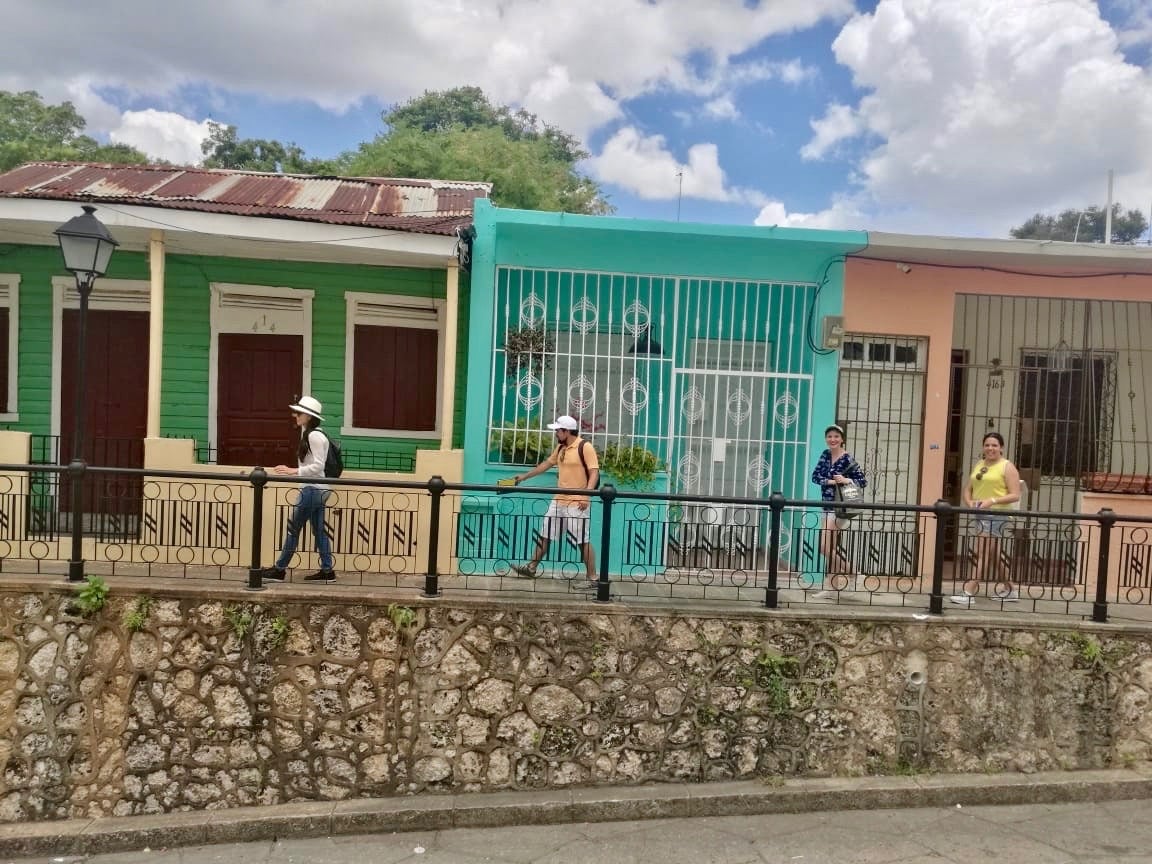The Marriott hotel chain invited me to visit the Dominican Republic and check out its hotels in Santo Domingo.
We went to visit the following hotels:
- JW Marriott Santo Domingo
- Renaissance Santo Domingo Jaragua Hotel & Casino
- Courtyard Santo Domingo
- Sheraton Santo Domingo
They no longer only offer hotel nights; with its Mariott Moments program, travelers are offered unique experiences. They are divided into culinary moments, lifestyle, sports and entertainment. Their guides took us to see three typical products (besides music) from the Dominican Republic: rum, tobacco and cocoa.

Rum and Cane Museum
We arrived at a building on the corner of the Colonial Zone on Isabel la Católica Street. It had a small sign that said Rum and Cane Museum. This building dates from the 16th century and has been restored. It opened as a museum at the end of 2008. Inside it shows photos of what it was like in the old days.

Upon entering our guide stood next to a huge brass stove used to make molasses. He told us how his ancestors, blacks brought as slaves, worked in the cane fields. Sugarcane arrived in the Dominican Republic on the second trip of Christopher Columbus, on November 28, 1493. Originally it came from Africa and the Spaniards brought it from Canary Island. In addition, they brought animals, birds and settlers from Europe.


Sugar was for many years the main industry of the Caribbean. Originally they used sugar mills that served as giant juicers and then went on to industrialization. The molasses is fermented, aged and mixed in different ways to make rum. The most popular Dominican brands are Barceló and Brugal, but you can find hundreds more.



At the end of this tour in Santo Domingo you will enter the bar room where the bartender offers you some rum options with flavors such as passion fruit or cinnamon. I love passion fruit and abducted the bottle, which would have been even better cold. The Rum and Cane Museum has a small shop where they sell rum from all over the country at reasonable prices.



Caoba Cigar Factory
Unlike sugar, tobacco is native to the Dominican Republic. Christopher Columbus is credited with introducing and popularizing tobacco in Europe. The natives of Hispaniola, as the island was known at that time, smoked dried tobacco leaves tied with a thread.


Caoba Cigar Factory manufactures handmade cigars in the Colonial Zone of Santo Domingo. We went first to the factory and then we went to the shop that is about 20 meters away in the square. As soon as we climbed the stairs we felt a strong smell that grows stronger when you enter the rooms. Some of the comrades of the press trip decided to stay outside.


Tobacco is sown in the inland area of the Dominican Republic including Santiago, Navarrete, and Moca. The earth is magnificent since it has a lot of sugar and is favorable for the cultivation of the leaf. They are collected one by one manually and dried naturally. Then they ferment for three months to be aged for two to three years.
Joaquin Cambeiro Oreiro, manager of the Caoba Cigar Factory, assisted us and explained the manufacturing process. Each cigar is made up of 5 leaves. First the cloak, which rolls the gut that are three different leaves: one gives the flavor, another the strength and the last the aroma. Ending with the layer that gives the presence or image and brings about 10% of the flavor.


The twisters are experts, each employee has at least 15 years of experience. They can roll a cigar in thirty seconds and make hundreds a day. Most of the world’s cigars are manufactured by machine, very few are handmade. When it is ready it is passed to the aging rooms for 6 months. This is done so that the cigar is compacted well and does not sting, scratch or sour.



These premium cigars are exported to countries such as the United States, Taiwan, France and Germany. And they are in negotiations with Argentina and Brazil. In cruise season they receive up to eight or nine groups of fifty people each day.


Choco Museum
This is the second time I visited the Choco Museum in Santo Domingo, which is very close to the Amber World Museum. A high school classmate who is a Dominican took me before and I ended up buying everything. The store is full of products made from cocoa from sun cream to lip balms. They also sell edible products such as cinnamon sticks and vanilla extract.


Of course, they have chocolate tastings including a hot chocolate drink. The staff explains that cocoa is planted in the northeast part of the island mainly. They have three types of cocoa: 80% trinitario, 19% foreigner and 1% creole. The majority is sold unfermented. The fermentation process consists of putting the white pulp and the cocoa seeds in wooden boxes and covering them with banana leaves. This causes the seeds to change from purple to chocolate.

Then the fermented seeds are dried to lower the moisture content from 60% to 8% to guarantee their preservation. Usually this takes five days and then they go through a machine called the guillotine to control the quality.


Cocoa trees grow between 12-15 meters (40-60 feet). It takes them five years to start producing fruit and produce up to 25 years usually. They need a lot of rain, between 1,500 to 2,000 mm annually. Apart from warm temperatures over 60F (16C) and high humidity. Its flowers are so small that they can only be pollinated by tiny mosquitoes. This flower needs three months to transform into ripe cocoa. Each cocoa pod produces 40 grains on average.







